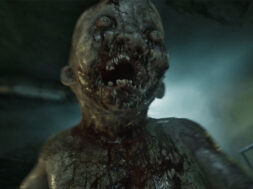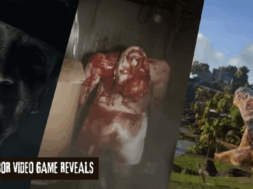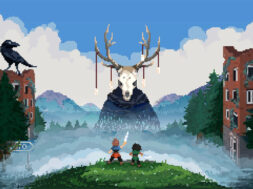Cosmic horror is one of the oldest and sturdiest sub-genres there is. Unfathomable monsters, uncaring universes, and descents into insanity make for captivating tales, and the tropes of the genre allow for so many variations on a theme that the core concepts remain fresh decade after decade. Video games are better equipped than perhaps any other medium for such a story, immersing the player in the bizarre and frightening world(s) presented. Eldritch isn’t the first game to do it, but it does it with so much style and charm it’s difficult to resist.
Released in 2013, Eldritch features randomly generated levels and perma-death. The layouts are never the same twice, and if you die once you start all over again, every item erased from your inventory. (The one exception to this is any money you saved in the game’s bank before getting dusted. That investment can be reclaimed by your next guy.) The game begins in a large library filled with odd glowing books. Reading any of these ancient tomes transports the player to a strange and hostile area. In order to win the game, the player must descend the levels of each world, avoid or defeat every enemy they come across, steal the souls of legendary Old Ones, and make it all the way back to the portal that will return them to the library. Without dying.

This isn’t a complicated game in terms of goals, but the execution certainly is. The random generation of each level guarantees that no previous playthrough knowledge will help, and the place is just crawling with beings waiting for a victim. There’s hooded cultists tossing fireballs, bipedal fishmen, reptilian statues that attack when you’re not looking, formless blobs with multiple eyes and mouths, even mini-Cthulhus. There are weapons in the game, but most of the time a stealthy approach is recommended. Keys will open locked doors and money can be used to purchase goods in shops dotted throughout the map, often run by a friendly fishman. If you don’t have the cash, you can always try taking the shopkeep down.
Visually, Eldritch is often compared to Minecraft for exhibiting a similar blocky style. The two titles could not be more different in gameplay and atmosphere, however. Turning the corner to hear the ominous chanting of cultists or the distinctive “glub-glub” of a fishman makes for an unnerving experience, and the roguelike features force careful decision-making. The game’s simple look and occasional moments of humor may cause some to doubt its scare factor, but the persistent level of dread and the heart-stopping moment when you turn a corner and come face-to-face with a… thing that looks like the ReDead from The Legend of Zelda: Ocarina of Time if they had no legs and even longer arms debunks that criticism handily. Of course, terror is subjective.
Even better, the game offers up mysteries that even its creator doesn’t know about. One-man developer David Pittman finished a massive content and quality-of-life patch entitled Eldritch Reanimated and made it available for free back in 2019. When a player asked him on Steam what the “blood pool room” was for, Pittman admitted that he couldn’t remember a single thing about creating such a place, why it rarely appeared, or what it was intended to do. Now that’s spooky.

Eldritch also features two connected stand-alone adventures: Trick or Treat (a short, dark area full of invincible and difficult-to-see Shoggoths) and At the Mountains of Madness, an expansion based on the Lovecraft story. Enjoy the giant penguins. That’s to say nothing of the Endless Library, and the Asylum, and the Shadow World…
Roguelikes are made for a certain type of gamer, and stealth games even more so. If the combination of those two experiences coupled with some disturbing imagery and cosmic horror concepts appeals to you, Eldritch will scratch that adventure game itch quite well.
Eldritch is available on Steam.









